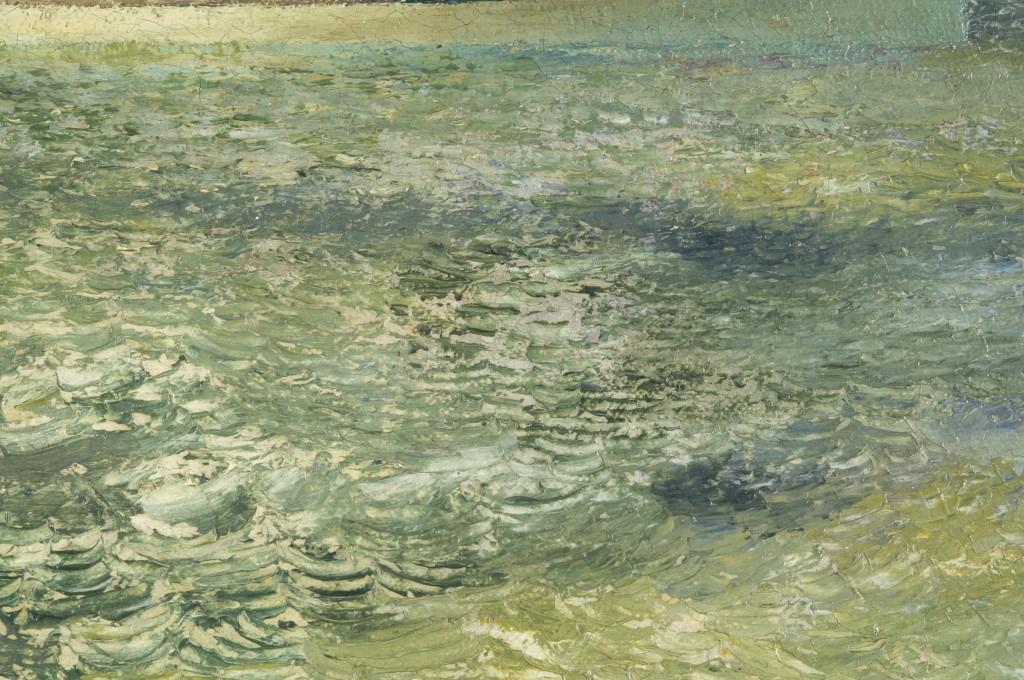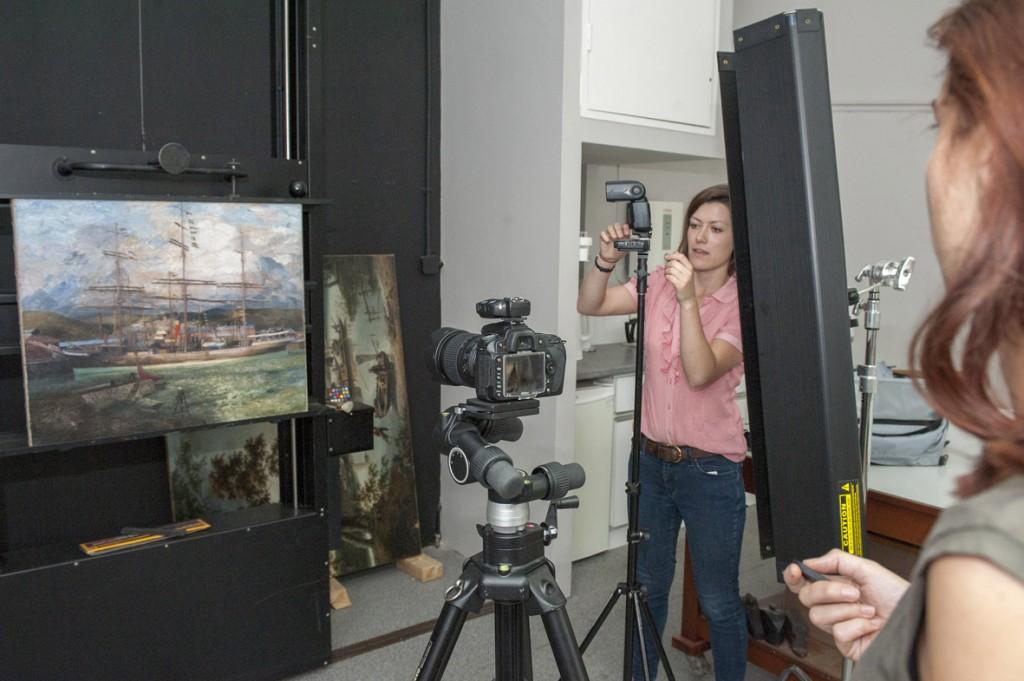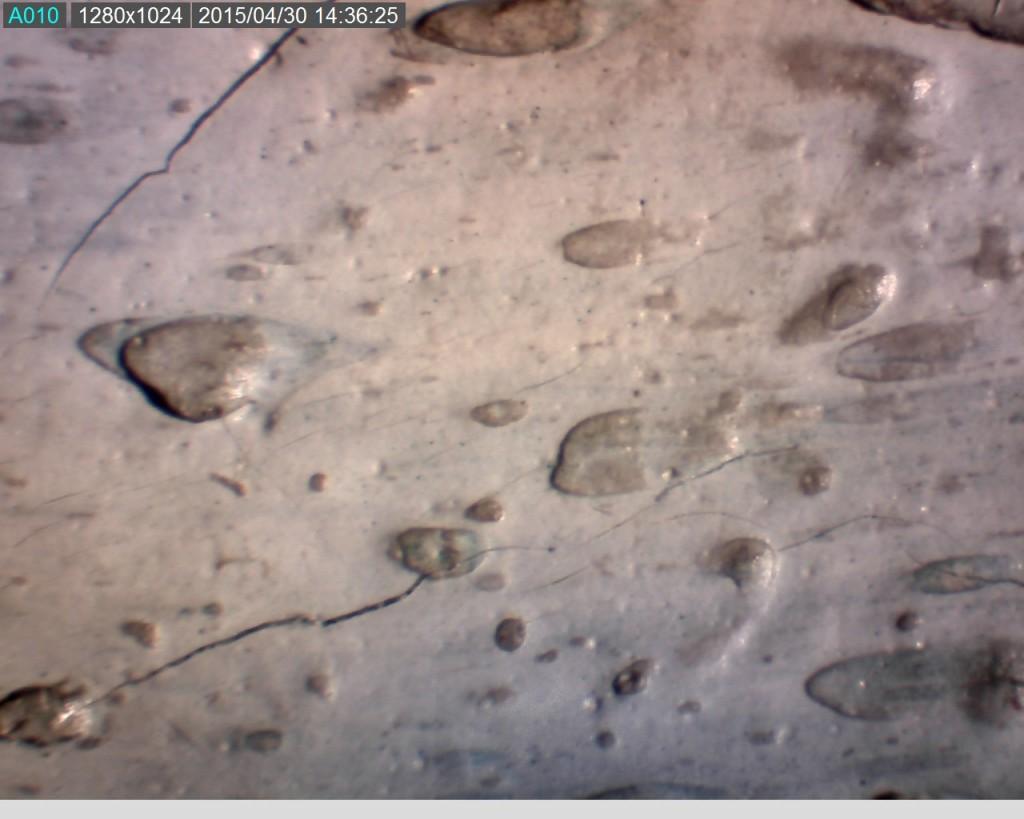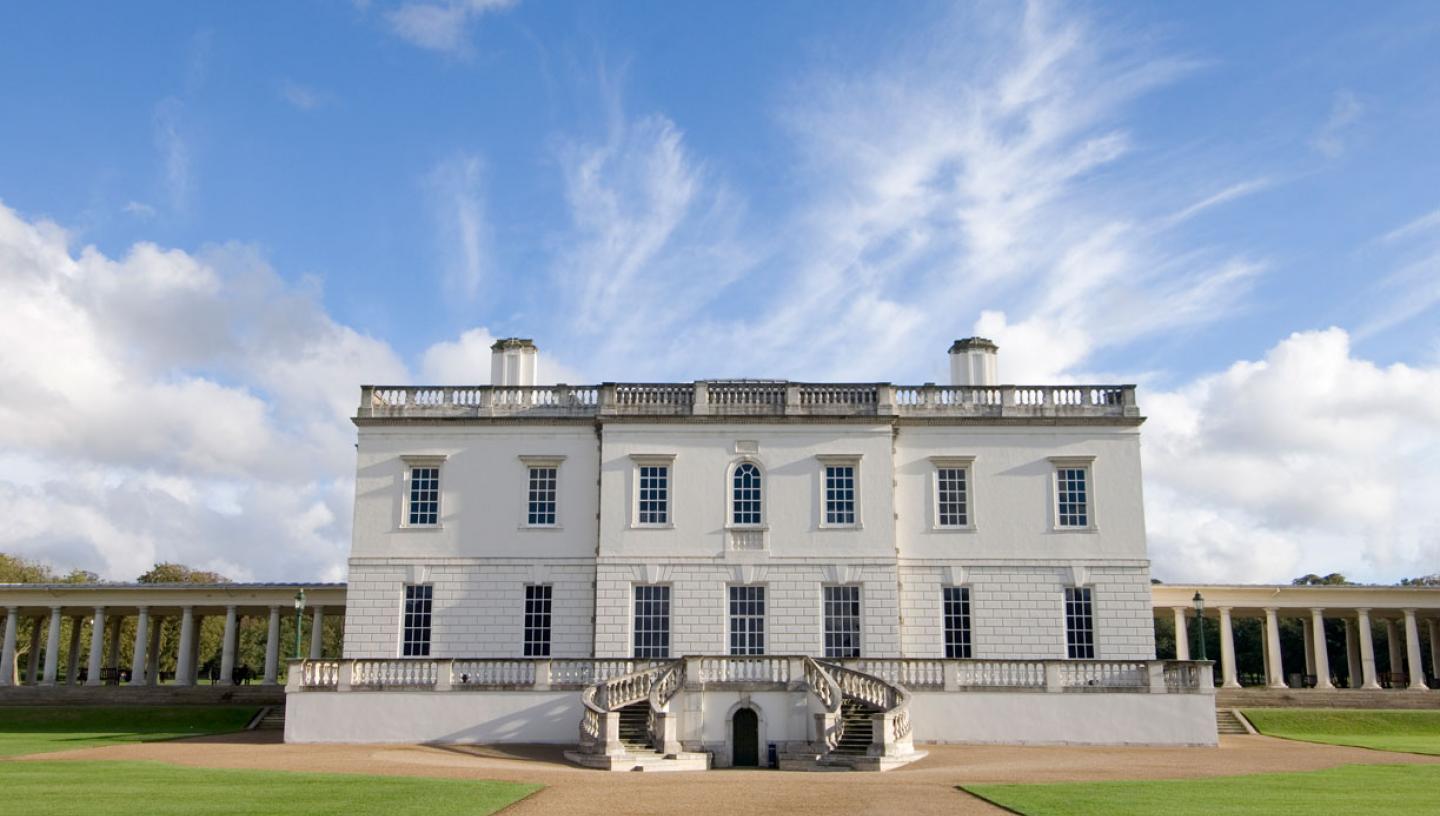
Essential Information
| Location |
Queen's House
|
|---|---|
11 Sep 2015
Our paintings conservator Sarah Maisey talks us through the complex process of conserving a new painting for the Queen's House displays.
Right now in the paintings conservation studio I’m in the middle of working on a new acquisition, The Grain Ship by Richard Eurich, which will be on display in the Queen’s House in 2016. I usually work on older paintings from the 17th to the 19th centuries but this one is an exception. It was painted in 1937 and it’s exciting to see the modern and experimental painting technique. The work looks to have been largely executed with a palette knife, giving a pronounced texture. The artist has also scraped into the surface, partially revealing the pale priming layer in places. Shining a raking light from a sharp angle across the work highlights its surface topography.
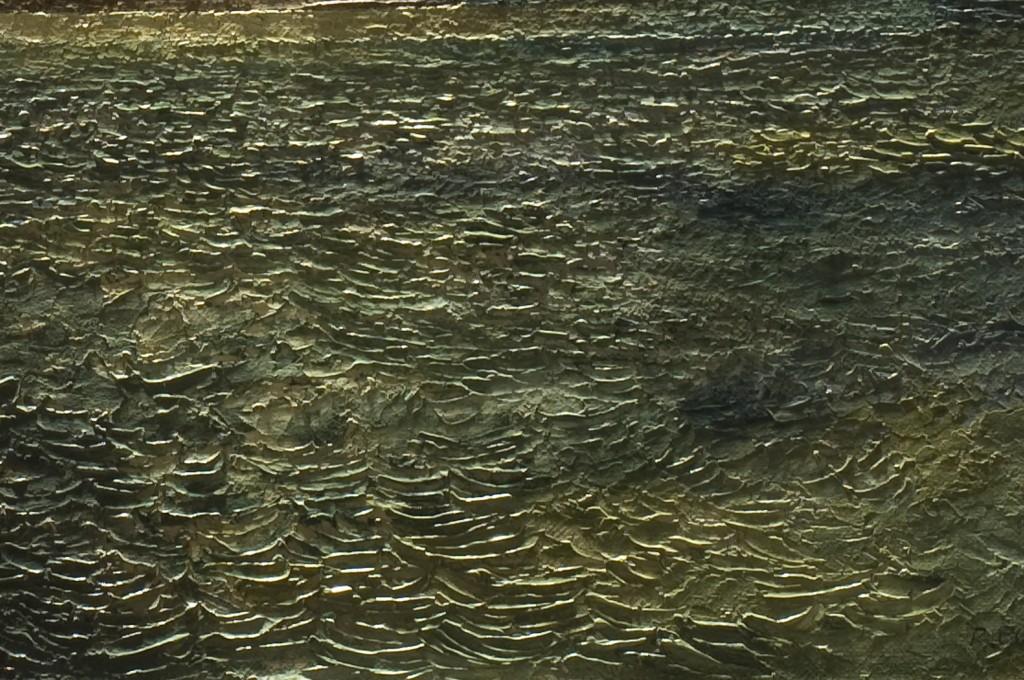
Taking raking light examination a step further, Charlotte Marriot (RMG Science and Technology research intern) and myself took the opportunity to carry out some RTI (reflectance transformation imaging) on the painting. This involves taking multiple shots of a painting with the light at varying known angles and then feeding them into a software program which enables interactive re-lighting of the painting at whatever angle one chooses. This, along with mathematical enhancement, can reveal details about surface topography that wouldn’t otherwise be easily detected. Look out for Charlotte’s upcoming blog on her work for more details of this process.
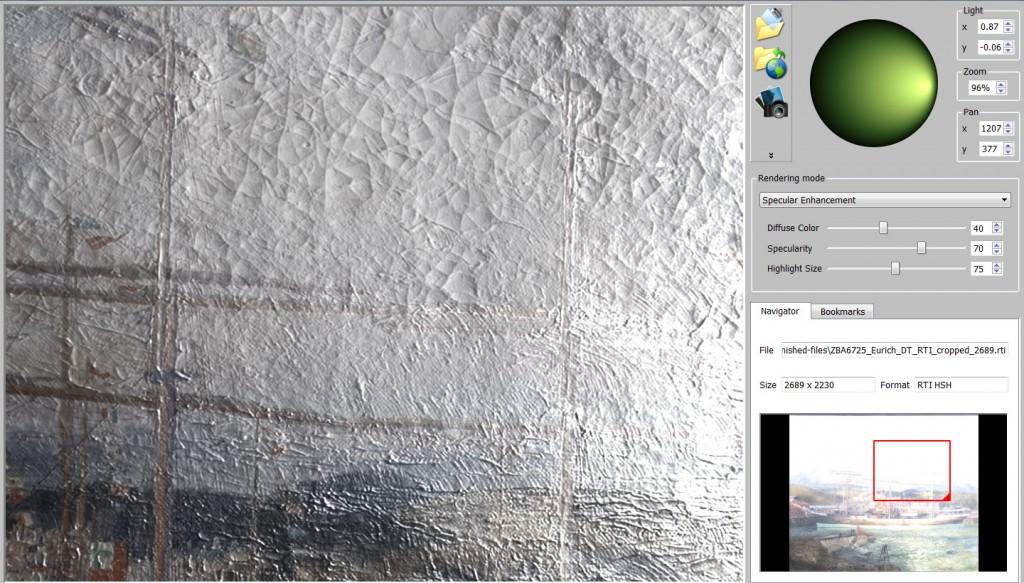
Using RTI it’s also possible to see some very raised cracks in the sky. Such cracks result from multiple layer structures in the paint all drying at different rates and pulling on each other. We can get a glimpse of the complexity of this layer structure by looking at the fractured edges of paint where there has been a small tear to the canvas. The multiple layers of blue and white suggest Eurich was repeatedly changing his mind and re-working the composition.
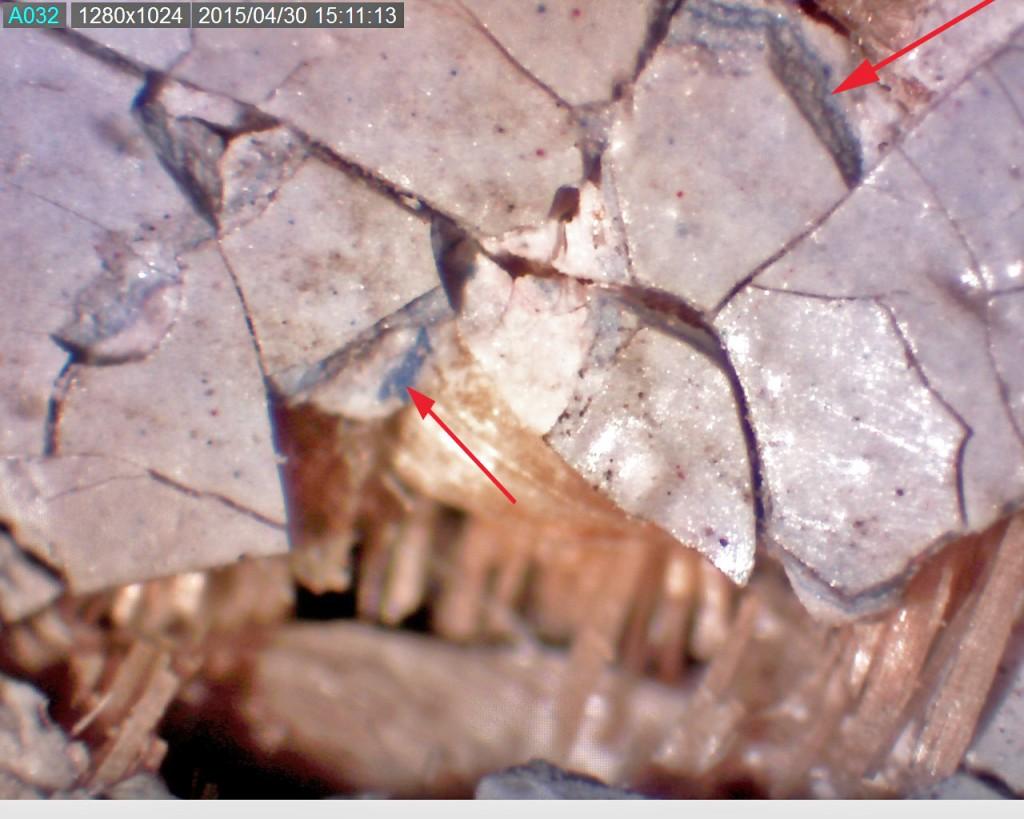
Looking under the microscope I also spotted intriguing tiny pits in the paint layer. I’ve seen this sort of thing before when additives to the paint had migrated to the surface or when the paint surface has been chemically damaged in the past, resulting in a leaching of the oil paint. However in this case, really close inspection under the microscope showed that many of them, like those in the image below, had a directional quality. This suggests they derive from tiny bubbles in the paint layer which burst during painting. It seems Eurich was whipping up his paint as he rapidly applied it.
When it comes to cleaning the painting these pits present a problem. Dirt was trapped inside them beneath an overall varnish, which sealed the dirt in leaving a disfiguring overall effect. To make the picture presentable, it’s been necessary to remove the varnish and then find some way of getting into the tiny pits to remove the dirt beneath. In the end the most effective method I found involved taking a tiny 000 sized brush with the hairs cut short and applying a specially formulated cleaning gel which would remove the dirt and varnish together.
This all has to be done under a microscope so it’s been a painstaking process but I’m almost there. Once the work is completed and the painting has a new frame (it doesn’t have one at the moment) it’ll be ready to go into the Queen’s House re-display, looking, hopefully, as close as possible to how Eurich intended it to look.
